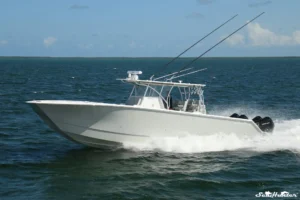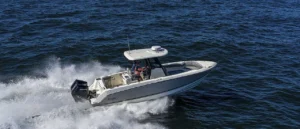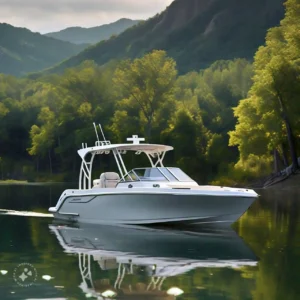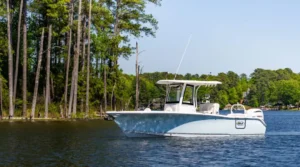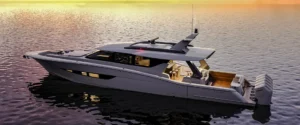Single vs. Twin vs. Triple Outboards: Which Configuration Is Right for Your Boat?
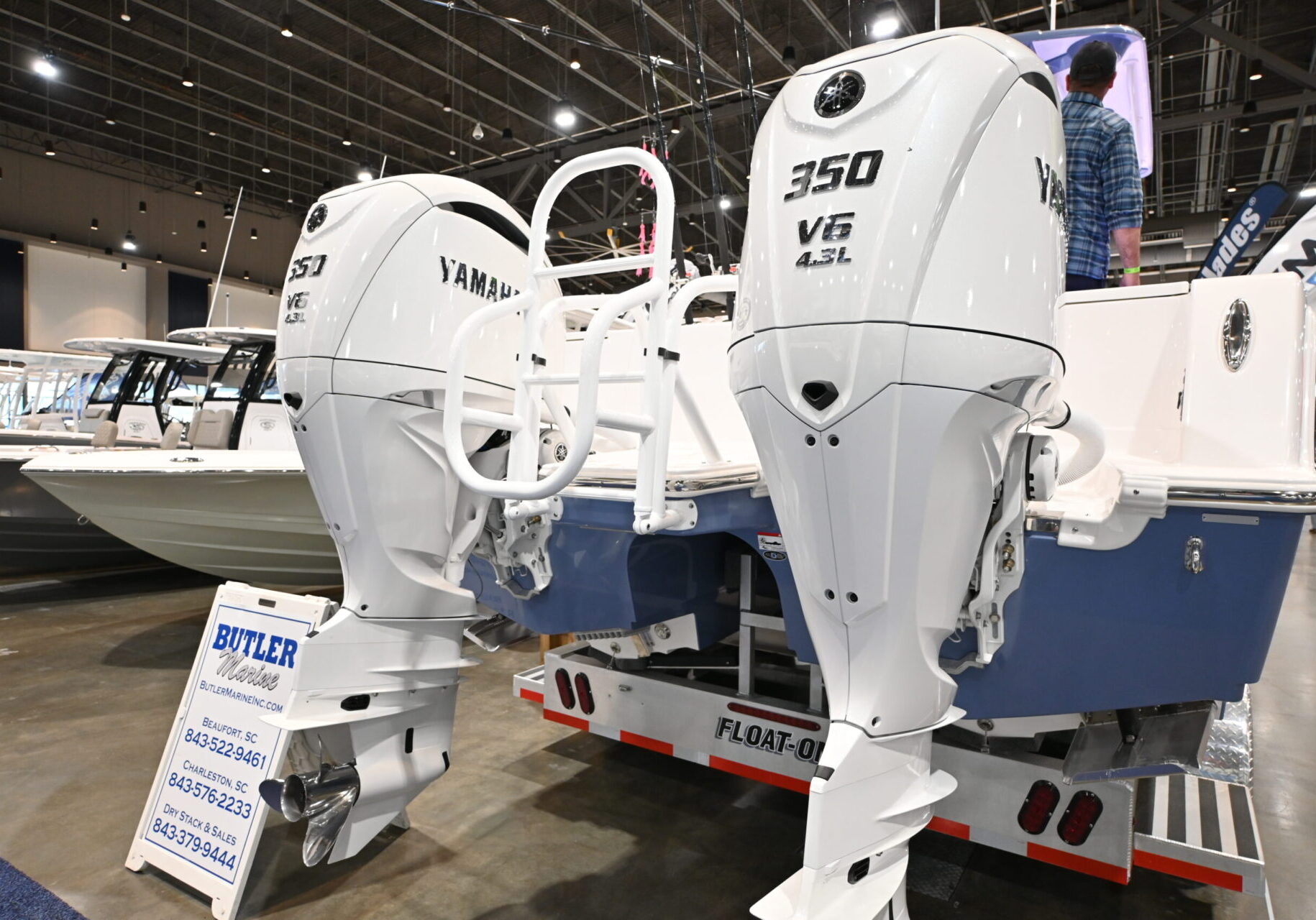
Why Outboard Configuration Matters
When you’re shopping for a boat—or repowering one you already own—one of the biggest questions you’ll face is how many outboards to put on the back. Should you go with a single high-output engine, or split the power across two or even three smaller motors? Is a quad setup overkill, or exactly what you need for offshore runs?
This isn’t just a horsepower question. Outboard configuration impacts everything from performance and handling to redundancy, cost, fuel economy, and even how your boat fits on a trailer or at the dock. And while it might be tempting to just go for “more,” the best setup often depends more on how you use your boat than how many engines you can fit across the transom.
We’re going to take a close look at the most common engine layouts—from single-engine simplicity to the brute force of quad or quint configurations—and break down what each setup offers in terms of speed, reliability, maintenance, and real-world practicality.
Common Outboard Configurations and What They Mean
Outboard-powered boats come in a wide range of engine setups, but there’s a general pattern in how manufacturers match configurations to boat size, performance goals, and use cases. Here’s a breakdown of the most common options and where they typically show up:
Single Engine (200–450 HP)
- Found on: Bay boats, flats boats, smaller center consoles (18’–26′)
- Simple, efficient, and affordable to run and maintain
- Modern high-horsepower outboards (like a Yamaha 425 XTO or Mercury 400 Verado) can easily power many boats into the 26–28 ft range
Twin Engines (150–300 HP Each)
- Found on: Mid-size center consoles (24’–32′), dual consoles, pilothouse boats
- Popular for offshore anglers who want redundancy—if one motor fails, the other can get you home
- Provides better low-speed control, often compatible with joystick steering and digital controls
Triple Engines (300–450 HP Each)
- Found on: Offshore fishing boats, performance center consoles (33’–40′)
- Adds power, speed, and a level of security when running far offshore
- Can make a heavy hull feel more responsive, especially in rough water
- Comes with higher operating and maintenance costs
Quad Setups (300–600 HP Each)
- Found on: Large offshore and luxury center consoles (38’+), tournament boats
- Offers serious thrust, redundancy, and control for bigger, beamier hulls
- Joystick docking and digital helm systems make them surprisingly manageable
Beyond: Quint and Sextuple Setups
- Found on: Flagship offshore boats and high-performance showpieces (45’+)
- Usually paired with ultra-wide hulls and 2,000+ total horsepower
- Less about efficiency—more about maxing out speed and control over large, heavy boats
The right setup doesn’t just depend on how much horsepower you want—it depends on how much your boat actually needs to perform the way you want it to. As we move into specific comparisons, you’ll start to see why sometimes two smaller motors outperform a single big one—and when adding a third or fourth engine does (or doesn’t) make sense.
Single vs. Twin Engines – Pros and Tradeoffs
Choosing between a single high-horsepower outboard and two smaller engines is one of the most common configuration decisions boaters face. While the total horsepower may be similar, the on-the-water experience can differ dramatically depending on how that power is distributed.
Performance & Handling
A single large outboard—say, a 300 HP motor—is often lighter and more efficient at higher speeds. It typically delivers better top-end performance on smaller hulls and is more than capable of pushing boats in the 22’–28′ range.
Twins, like dual 150s, may sacrifice a bit of hole-shot acceleration or top speed on lighter boats, but offer improved balance and sometimes better control in rough water. For heavier hulls or boats that run loaded, twins can provide more consistent lift and traction across a wider RPM range.
Redundancy & Safety
Redundancy is a major consideration, especially for offshore anglers. With a single engine, a mechanical failure or clogged fuel filter usually means calling for help. Twin engines provide built-in backup—if one goes down, the other can still get you home, even if at a slower pace.
This is one of the key reasons twin-engine setups are so common on boats that routinely run offshore, even when the total horsepower mirrors a single-engine option.
Fuel Efficiency
In general, a single engine is more fuel efficient. It creates less drag, weighs less, and requires fewer mechanical systems. But under certain conditions—especially at lower cruising speeds or in chop—twins can come surprisingly close, thanks to better load sharing and more optimized engine RPMs.
Maintenance & Cost
Two engines mean double the maintenance—twice the oil, filters, impellers, and lower unit service. The cost, time, and effort involved all go up. For many owners, the simplicity and affordability of a single-engine setup is reason enough to stick with one motor.
Still, some see the added complexity of twins as worth it for the safety margin, especially when venturing far from shore or in less predictable conditions.
Maneuverability
Low-speed control is where twins shine. Independent throttle control allows the boat to pivot or “walk” sideways—great for docking in tight slips or windy conditions. While newer single-engine setups with joystick or electric steering are improving, twins still offer superior fine-tuned maneuverability.
Whether it’s a single 300 vs. twin 150s, or a 400 vs. twin 200s, the tradeoffs follow a familiar pattern. If you prioritize simplicity, cost, and fuel economy, a single engine is often the smarter move. But if safety, control, and offshore confidence matter more, twins deliver advantages that are hard to ignore.rth it.
Twin vs. Triple Engines – The 600–900 HP Range
As boat sizes push into the 30- to 40-foot class, many buyers start weighing the benefits of triple-engine setups against beefier twin configurations. The decision isn’t just about hitting a certain horsepower number—it’s about how that power is delivered, how the boat is balanced, and what the owner values most in terms of performance, control, and cost.
Power Distribution & Performance
Take a setup like twin 450s vs. triple 300s. Both offer 900 total horsepower, but the way that power hits the water can feel different. Twin high-torque engines may get a heavier hull on plane faster, especially with today’s advanced gearcases and larger props. But triple 300s distribute thrust across more props, which can improve traction, midrange control, and responsiveness—especially in choppy conditions.
In many cases, boat manufacturers design hulls with one of these setups in mind. Some hulls perform best with wide-set triples, while others handle better with fewer, more powerful motors mounted closer together.
Efficiency at Cruise
Cruising efficiency is often similar between the two setups, though tripling up adds more drag and weight. However, running three engines at lower RPMs can sometimes burn less fuel per engine than pushing two harder—especially at mid-speed cruising ranges.
It often comes down to how the boat is loaded, the conditions it runs in, and how efficiently the hull interacts with the engine layout.
Cost and Maintenance
Triple outboards cost more—both upfront and over time. More rigging, more propellers, more fluids, and more time at the service dock. If you’re budget-conscious or planning to do a lot of hours each year, twins will be more manageable from a maintenance standpoint.
That said, triples may offer better long-term flexibility, especially if you plan to upgrade later or want maximum resale appeal on performance-oriented boats.
Control & Maneuverability
Triple engines—especially when paired with digital throttle, joystick control, and automatic trim systems—offer excellent close-quarters maneuvering and high-speed tracking. You get more directional control across the beam of the boat, which can be noticeable when docking in wind or current.
Still, modern twin-engine systems have come a long way and may offer all the control most owners need, particularly if paired with a bow thruster or joystick-compatible helm.
Ultimately, if your boat spends its time in big water, runs long distances offshore, or carries heavy loads, the added control and balance of triple engines might be worth the cost. But for many mid-size offshore boats, a high-output twin setup gets the job done—and keeps things simpler.
Quad Setups and Beyond – When Do Four (or More) Outboards Make Sense?
If you’ve spent time around big offshore center consoles lately, you’ve probably noticed more boats sporting four, five, or even six outboards across the transom. What used to be eye-catching is now almost standard on certain classes of high-performance, heavy-duty hulls. But while quads (and beyond) certainly deliver jaw-dropping power, they’re not always the right fit for every boater—or every boat.
When Quad Power Becomes Practical
Quad setups generally start to make sense once you hit the 38- to 45-foot range, especially with deep-V hulls or boats carrying significant gear, fuel, and crew weight. It’s not just about speed—though some of these boats break 70+ mph—it’s also about efficient planing, holding speed in rough water, and maintaining control at cruise.
Examples:
- A 42-foot center console rigged with quad 300s has the thrust to push through open ocean chop while carrying full fuel, gear, and crew.
- A luxury performance boat like a Midnight Express or Scout 420 LXF with quad 425s can combine speed and handling with redundancy for longer offshore runs.
- An offshore hybrid (like the Invincible 40 Cat) with quad 400s needs that much propulsion to stay agile and efficient in open water.
Redundancy & Offshore Confidence
For serious offshore anglers, redundancy is a key reason to run multiple engines. Quads (or quints) mean that even if one or two outboards fail, you can still keep moving. That added peace of mind is worth a lot when you’re 70 miles out with a crew and gear on board.
Maneuverability with Digital Helm Tech
Modern helm systems—like Mercury Joystick or Yamaha Helm Master EX—make handling quad and quint setups almost effortless. With digital throttle, automatic trim, and individual engine steering, large boats can now pivot, slide, and dock with precision that rivals pod or inboard systems.
The Tradeoffs: Cost, Weight, and Complexity
Here’s the catch: everything scales up. With four engines, you’re talking:
- 4x oil changes
- 4x lower unit services
- 4x the fuel lines, rigging, and mounting hardware
- A significant increase in transom weight
And of course, the initial cost of purchasing and rigging four or more outboards can be staggering—especially when you’re dealing with 400–600 HP class motors.
Beyond Quads: Quints and Sextuplets
Once you hit boats in the 50–65 ft range, it’s not unheard of to see five or six engines. These are typically custom builds, tournament machines, or luxury dayboats meant to go fast, turn heads, and cover distance. Do most people need this? Not really. But for certain use cases—like high-speed travel, offshore charter operations, or flagship models—they deliver unmatched performance.
So, when does it make sense? If you’re running a large, offshore-capable boat, regularly carry heavy loads, or prioritize power and control over simplicity, quads and beyond might be worth the investment. For everyone else, fewer engines often strike a better balance between cost, maintenance, and usability.
Other Factors That Affect the Decision
While horsepower and performance get most of the attention, there are a handful of less obvious—but equally important—factors that can (and should) influence your engine setup. These considerations often come into play after you’ve narrowed down the size and type of boat you’re looking at.
Hull Design
The shape and style of your hull play a major role in determining the ideal engine setup. Some monohulls are optimized for a single engine, while others are designed specifically for twins, triples, or quads. Trying to fit a different number of engines than the hull was intended for can throw off weight distribution, planing performance, and fuel efficiency.
A good example is catamarans. Because of their twin-hull design, cats typically require two or four engines—one for each sponson. Mounting a single or triple on a power cat simply doesn’t work with the geometry of the hulls. Similarly, boats with notched or pre-rigged transoms often have limited flexibility in how engines can be mounted.
The takeaway: Always consider how the boat was designed to carry its power. Installing more—or fewer—motors than intended isn’t just about rigging, it can completely change how the boat handles on the water.
Boating Location
Where you boat matters. If you primarily cruise calm inland lakes or protected bays, the need for multiple engines is much lower. But if your typical day includes offshore runs or navigating unpredictable inlets, redundancy and controlbecome more valuable.
Also, certain areas—like the Bahamas or Gulf Coast—see a lot of long-distance hauls, where having extra motors isn’t just about power, but peace of mind.
Dealer Support & Brand Preference
Sticking with a brand that your local dealer services well can be a real advantage. Not every marina is equipped to handle triple or quad setups, and service wait times can grow with complexity. If you’re far from a certified Yamaha, Mercury, or Suzuki tech, keep that in mind when choosing an engine package.
Boat Usage
Weekend cruising, tournament fishing, offshore diving, sandbar hopping—your intended use case makes a big difference.
- Casual boaters may prioritize simplicity and economy.
- Hardcore anglers or offshore runners may prioritize speed, backup power, and control systems.
- Performance enthusiasts might want all-out horsepower just for the thrill of it.
Resale Value
In some boat classes, twin or triple engines can boost resale value. Buyers may perceive multi-engine boats as more capable or more desirable—even if they don’t technically need the extra power. On the other hand, extra engines can raise flags for maintenance-minded buyers who’d rather not inherit four motors’ worth of upkeep.
Engine configuration isn’t just a numbers game—it’s a decision that should reflect how, where, and why you use your boat. Matching the setup to your boating lifestyle ensures you get the best mix of performance, safety, and ownership satisfaction.
Final Thoughts
When it comes to outboard engine configurations, more isn’t always better—just different. A well-matched single engine can offer simplicity, efficiency, and lower maintenance, while twin and triple setups provide added control, redundancy, and performance headroom. Quads (and beyond) bring serious power to the table but come with real tradeoffs in weight, cost, and complexity.
The best setup really depends on your boat, your location, and how you plan to use it. If you’re a casual coastal cruiser or inland lake boater, a single or twin might be all you need. Offshore anglers, long-range cruisers, and performance-minded boaters may find value in stepping up to triples or quads.
The key is balance. Power should match the hull. The number of engines should reflect your boating lifestyle—not just your budget or your ego. In the end, the best engine configuration is the one that gives you the most confidence and the best experience every time you leave the dock.
Follow us on Social Media!
Search
Recent Posts
Intro to Boat Terminology If you’ve…
For many families, boating is about…
The Pinnacle of the Center Console…







